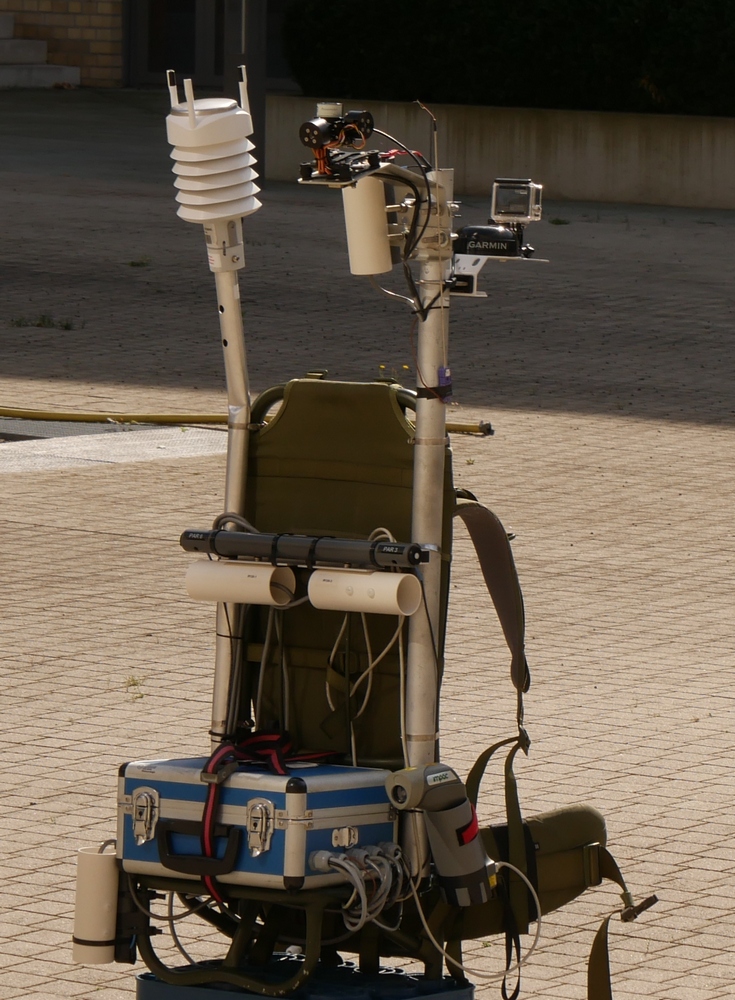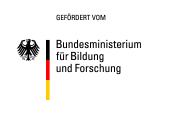Fourth and last Intense Observation Period by 3DO (IOP 4)
In June and July 2018, the fourth and final Intense Observation Period took place in Stuttgart and Berlin. In Hamburg the researchers will measure from mid-August to mid-September. Again, data on air pollutants (e.g. nitrogen dioxide, ozone, particulate matter) and meteorological variables (e.g. wind, humidity and air temperature) were collected.
In Berlin, as in last summer, the focus was set on the acquisition of meteorological variables such as direct short-wave irradiation, but also on long-wave radiance that is relevant for human bio-climate. This summer has so far clearly shown the stressful impact on humans of very hot days and the lack of cooling at night.
Bicycles and backpacks upgraded to a mobile weather station were used by researchers on routes near Ernst-Reuter-Platz. The aim is to detect the exposure of pedestrians and cyclists to air pollution and meteorological conditions while moving on the streets.
Measurements were taken at various places in the city, e.g. around Ernst-Reuter-Platz, at secondary school centre in the Schillerstraße in Charlottenburg, at Rothenburg Straße in Steglitz and at the Tempelhofer Feld, where gliders of the University of Augsburg spiral-shaped ascented in the air, while at the other end of the Feld the German Weather Service's captive balloon lifted into the air. At Ernst-Reuter-Platz and Steglitz, the kopter of the Leibniz Universität Hannover rose to about 250 m height above ground. For the first time, a single engine Cessna of the German Aerospace Center (DLR) was part of the campaign. Depending on the prevailing wind direction, the Cessna flew specific routes over Berlin to measure air quality or to determine the height of the urban boundary layer. Again, high wind speeds, cloud cover or too much air traffic caused some problems during the campaign.
In Stuttgart, mainly the same measures as in Berlin were recorded. In addition to measurements on ground with bicycles or measuring vehicles, the Kopter and the Cessna were also on their way to measure air quality and meteorological situation over the city at different heights. Due to the position of Stuttgart in a valley and the surrounding relief influencing circulation of air high air pollution is often possible in Stuttgart. It is therefore important to carry out wind and turbulence measurements in order to be able to assess the associated pollutant propagation.
In Hamburg, as in the previous intense measurement campaigns, the thematic focus is on the small-scale variability of the wind field in urban areas. Wind measurements are carried out around the HafenCity University at six stations and are supplemented by a 10 m measuring mast on the roof of the university building as well as by ground-based measurements of wind speeds by laser up to a height of 1000 m. Since the first campaign, build-up environment has changed in the growing HafenCity. It is expected that this will have an effect on measurement data. For further information click here.
 |
|
||
| Measurements of wind, air temperature, humidity and radiation with a modified rucksack equipped with instruments. © Ronald Queck, TU Dresden 2018 | View from the roof of the Institute of Mathematic, which was equipped with a thermal camera, on the forecourt of the TU main building. © Ronald Queck, TU Dresden 2018 | ||
| Bio-meteorological measurements taken by the TU Berlin in the courtyard of the OSZ Körperpflege. © Ronald Queck, TU Dresden 2018 | Tethered balloon of the University of Stuttgart ascending over the area of the IfK. © Abdul Samad, University of Stuttgart 2018 |

